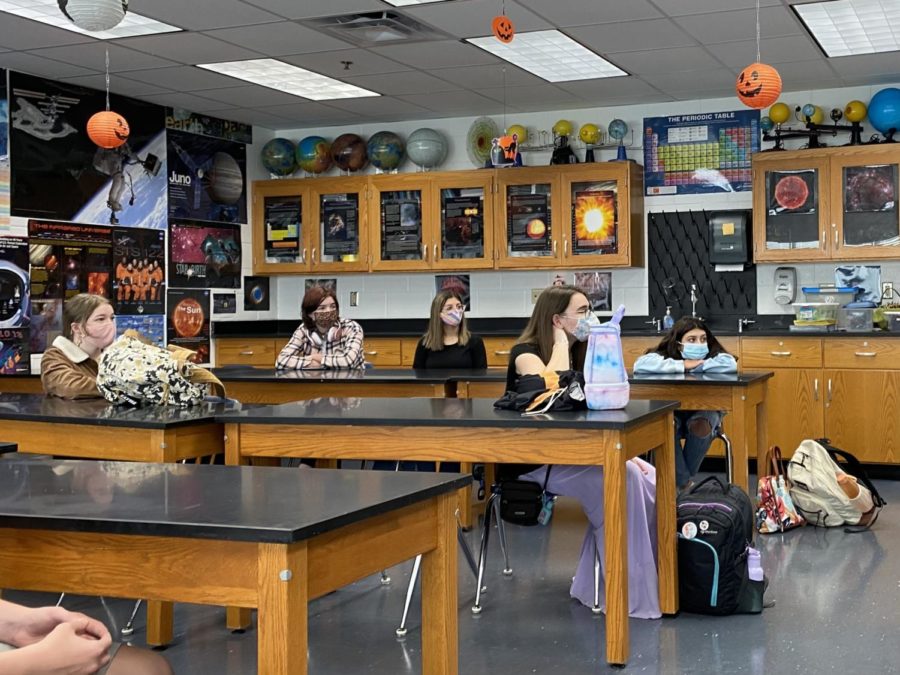Astronomy Club launches first meetings
Astronomy club members attend their second meeting on Oct. 14 and learn about the Orionid meteor shower.
October 15, 2021
Astronomy Club has begun for students of all grades in room 223, meeting once every one to two weeks.
The club allows students to learn about topics of their choice, as well as participate in astronomy-themed activities. Club members also learn about upcoming astronomical events and inform the school about them.
“I can only teach so much, there’s so much more that we could do that would be fun… but we could talk more about it in Astronomy Club in more depth,” said Michelle Bailey-Hennessey, Astronomy teacher and club sponsor.
The club welcomes students of all ages, and they don’t have to take the class to be in the club.
“It’s something anyone could really enjoy. People who want to know more about the universe outside of Earth,” said junior and club member Madison Holloway.
The club is currently focusing on the annual Orionid meteor shower that will peak in the early morning of Oct. 21, meaning the highest amount of comets will be visible.
“We’re gonna cross through debris left by Halley’s Comet, and so every year in October around the 21st, that’s when we pass through that debris field,” said Bailey-Hennessey.
The meteors can be seen streaking through the sky after midnight and before twilight. They are commonly referred to as shooting stars, although they are actually comet debris traveling at about 41 miles per second. No special equipment is required to view the meteor shower.
“They just need to go outside, after midnight…and look up. They don’t need a phone, they don’t need a telescope, they don’t need binoculars, they just need to lay there and be patient,” said Bailey-Hennessey. “It can be a little boring, but that excitement when you see the first one makes it all worthwhile.”



Christian and Lorna Hester • Oct 20, 2021 at 10:55 am
Awesome to know; and the Star of Bethlehem is going to be visible this year Dec 16-21, but is best visible after sunset (approximately 18:00 to 19:00 CET) on December 21!